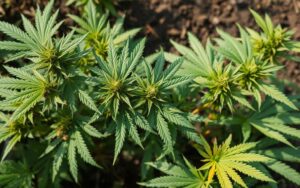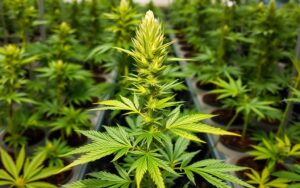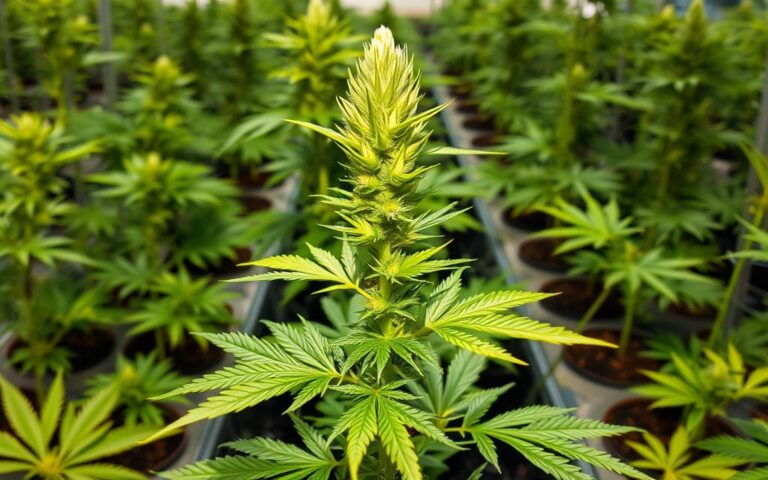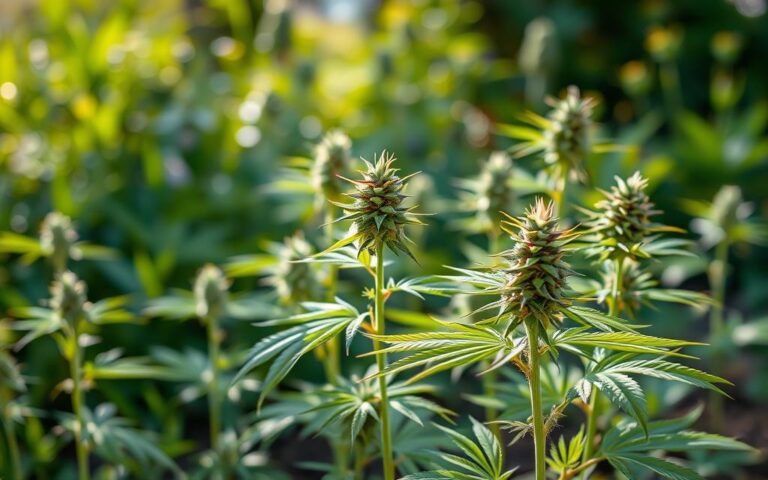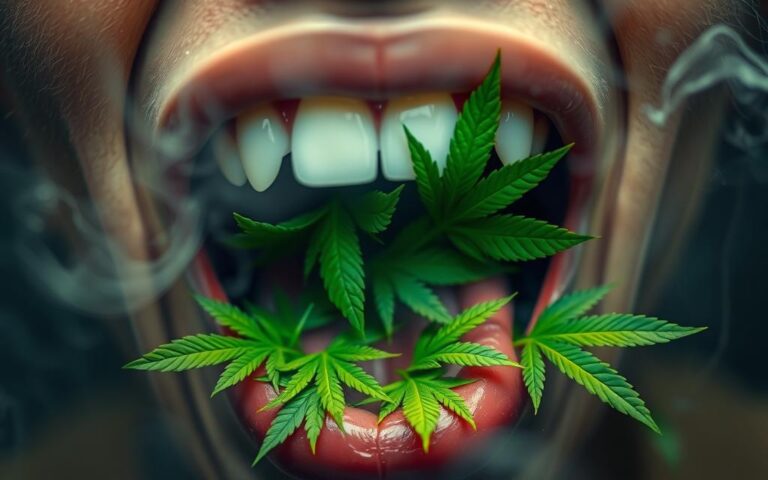When and How to Defoliate Cannabis Plants: Best Practices
Defoliating cannabis is key to improving plant health and yields. It involves trimming leaves to boost light and air flow. This helps the plant use energy better, making it healthier with more buds.
Defoliation is especially effective indoors where you can control conditions. Do it once in the vegetative stage and again when flowering. The right timing is crucial for good health and high yield. We’ll show you how to do it right and enjoy the benefits.
Understanding Cannabis Defoliation
Cannabis defoliation removes leaves to boost growth, especially indoors. Unlike outdoor plants, indoor cannabis benefits from less foliage. This reduction helps the plant use energy better, focusing on producing buds.
What is Cannabis Defoliation?
Defoliation means removing extra leaves to let more light and air around the plant. It’s a careful strategy to improve plant health and the amount they yield. By making the plant’s structure more open, it can use energy more effectively.
The Purpose and Benefits of Defoliation
Defoliating cannabis plants aims to increase yields. It offers many benefits like better light exposure, less mould risk, and fewer pests. Yield statistics reveal that defoliated plants produce more, averaging 298.68 g (10.54 oz), over non-defoliated ones, which yield about 274.43 g (9.68 oz). This shows the technique’s value for productivity.
Defoliation vs Pruning: Key Differences
It’s crucial to know the differences between defoliation and pruning for successful cannabis growth. Defoliation focuses on removing leaves to aid light and air flow. Pruning cuts back branches and stems for a bushier plant. Knowing these differences helps growers choose the right method for their goals.
When to Defoliate Cannabis
Defoliation plays a big part in how healthy and productive cannabis plants are. It’s important to know the best time for defoliation. By selecting the right moment, you can boost growth and increase yields. Let’s look into when is the perfect time to defoliate and what indicators to watch for.
Defoliation During the Vegetative Phase
Defoliating in the vegetative phase is best done just before the flowering stage starts. This lets the plants recover and focus their energy on making buds. By removing big fan leaves blocking light, the rest of the plant can grow better. Beginners should remove about 10–15% of leaves, while experienced growers may choose to remove more.
Timing for Defoliation in the Flowering Stage
The timing in the flowering stage is crucial. A second defoliation is recommended three weeks into flowering. Be gentle, focusing on big fan leaves but leave the young buds alone. The right timing here can vastly improve both the quality and quantity of your harvest. It helps buds grow well without stopping the plant from developing.
Signs That Your Plants Are Ready for Defoliation
Knowing when to defoliate means observing your plants closely. Look for signs like a deep green colour, fast growth, and a strong structure. Only defoliate healthy plants showing no signs of stress or nutrient issues. Recognising these signs helps growers get the most from defoliating without harming their plants.
How to Defoliate Cannabis Plants Effectively
Defoliation helps cannabis plants thrive if done correctly. Knowing the right tools and methods is important for gardeners. We will talk about the best tools for defoliating, how to do it step by step, and tips for success.
Tools Required for Defoliation
Choosing the right tools is critical for effective defoliation. Use sharp pruning scissors and precision-tip pruning scissors. They make clean cuts and lower disease risks. Proper tools lead to precise cuts, helping the cannabis plants recover well.
Step-by-Step Guide to Defoliating
It’s important to follow a step-by-step defoliation method to ensure plant health. First, check which cannabis plants are healthy enough for defoliation.
- Begin with large fan leaves that block light.
- Then, remove inner leaves that aren’t helping bud growth.
- Start at the bottom of the plant and move up.
- If you’re new to this, only remove 10-15% of leaves.
- Give the plants time to recover before removing more leaves.
This careful method minimises plant stress during defoliation.
Tips for Successful Defoliation
Useful tips can improve your defoliation results. Aim for a balanced approach when trimming. Removing too many leaves can shock the plant and slow its growth. Keeping 75% of the leaves ensures the plant has energy. Defoliation best practices suggest starting with fan leaves and taking care of the plant’s overall health. It’s good to defoliate during the growth and early flowering stages. Aggressive plants usually respond well to defoliation. However, be more careful with autos.
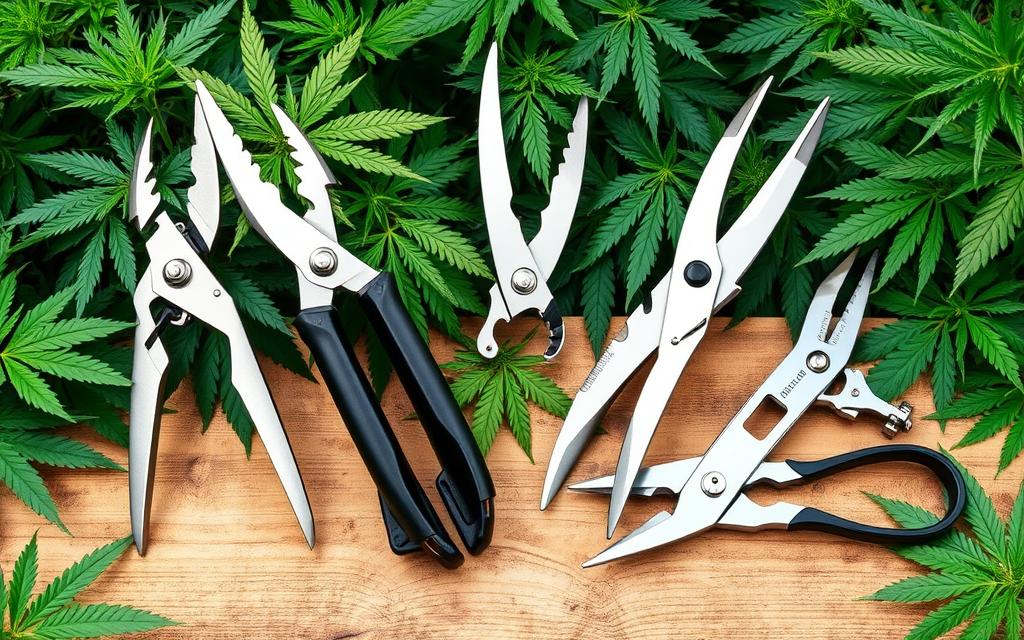
| Pros | Cons |
|---|---|
| Better light penetration | Stress to the plant |
| Improved airflow | Risk for beginners |
| Energy focuses on bigger buds | Can slow down growth |
| Helps manage space indoors |
Learning proper techniques, like how to defoliate cannabis plants, with defoliation leads to great harvests and healthy plants.
Choosing the Right Cannabis Plants for Defoliation
Picking healthy cannabis plants for defoliation is key. Look for plants that are growing well, have bright green leaves, and strong structures. These signs show they can cope well with the stress of leaf removal. Also, make sure they’re free of pests and diseases to start with.
Identifying Healthy Candidates for Defoliation
Look for these traits when picking plants for defoliation:
- Strong growth: Choose plants with firm, upright stems.
- Vibrant leaves: Plants should have deeply green leaves, a sign they’re well-nourished.
- Pest-free: Check that plants have no pests or diseases, to help them recover faster.
Understanding Plant Strains and Their Response
Different cannabis types react to defoliation in their ways. Knowing this can make your defoliation more effective. For example, the bushier Indica strains are usually more ok with defoliation than the thinner Sativa strains. Thus, you’ll need to adjust your technique depending on the strain.
Here’s a quick guide on how some cannabis strains handle defoliation:
| Strain Type | Response to Defoliation | Recommended Practices |
|---|---|---|
| Indica | Generally tolerant, can handle more aggressive leaf removal. | Defoliate regularly with a focus on big fan leaves. |
| Sativa | More sensitive, requires careful management of leaf removal. | Limit defoliation and monitor closely after each session. |
| Hybrid | Varied responses but often mediate between indica and sativa. | Assess individual plant characteristics for tailored defoliation. |
Conclusion
In reviewing cannabis defoliation, we see it’s a complex technique that needs close attention. Techniques like topping and lollipopping help with light spread. Yet, it’s crucial for growers to grasp defoliation’s role in cannabis growing. Research on crops like papaya and strawberries shows the downsides of removing too many leaves.
The main message is to adjust defoliation plans for different plant phases. In the vegetative stage, slow leaf removal boosts airflow and light reach. This promotes better plant health. But, being cautious during the flowering stage prevents stress and loss of yield. Using the right methods improves bud quality and increases yields, as this summary of cannabis defoliation shows.
To sum up, focusing on plant health and keeping enough leaves are key. This way, growers can enjoy the advantages of defoliation while keeping production high. Knowing how to do this well leads to better yields and top-notch cannabis. It highlights the value of growing with knowledge and care.



